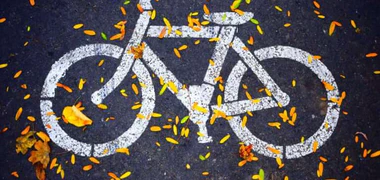Roll Away the Tension: Peloton's Foam Rolling Classes
This post about Peloton foam rolling classes has been updated. Why? Peloton has introduced a new series in foam roller classes to its collections.
This means that you will now see “Foam Rolling With Hannah” when you click Collections. These are six new classes in the stretching category. These classes are in addition to seven others that Hannah Corbin taught previously with Peloton foam rolling.
Peloton foam rolling classes: Why should you enroll?
Have you tried the Peloton foam rolling classes? Before I bought the Peloton, I had never heard of foam rolling, body rolling, or what a foam roll was. After I tried it, I was hooked.
Simply put, a foam roller is a DIY massage for your knotty, sore muscles. This is called myofascial relief.
This is how the Mayo Clinic explains what myofascial releases are:
Myofascial (myo-FASHe-ul) is a manual therapy technique that is often used in massage. This technique targets pain thought to be caused by myofascial tissue – the tough membranes that connect, support and wrap your muscles. The focus on manual pressure and stretching in myofascial therapy allows for restricted movement to be released, which indirectly leads to decreased pain.
How foam rolling can help tighten muscles
Foam rolling, as mentioned above, is a method for self-myofascial relief. It doesn’t cost anything to have it done by a professional massage therapist.
You can loosen tight muscles with the foam roller by rolling them over again and again. It’s like kneading bread dough. The dough will become more flexible the longer you continue to work with it.
You might also find knotty, sticky or crunchy spots when using a foam roll to myofascial release. You can then stop and focus on loosening them.
Foam rolling is so relaxing
It hurts like hell to use a foam roller, I’ll be honest. But it’s a good thing. It’s like the old song, “It hurts too good”, about foam rolling.
Regular use of your foam roller in conjunction with Peloton classes will make you feel much better. The foam roll is a great addition to your Peloton bike collection and a must-have piece in any home gym equipment kit.
Peloton foam rolling classes: Where can I find them?
It can be difficult to find the foam roller classes on Peloton. The search function on your bike or Tread is the only way to search for these classes. The search function is not available if you aren’t using Peloton hardware, but instead use a digital app.
UPdate: Now you can perform a quasi-search on the Peloton App. Here’s how. author: “Alex McRae”
Open the Peloton App. Second, select stretching from the Classes menu. Tap Filter, then Instructor. Because Hannah Corbin is the one who does nearly all of the Peloton foam rolling classes, four, you should choose Hannah Corbin. Scroll down to see the foam rolling classes.
How does foam rolling fit into the Peloton class niche market? It’s under stretching.
Peloton has had to get rid of several foam rolling classes as part of their latest purge. There were many more.
Peloton foam roller class teacher
There are currently only two Peloton instructors who offer foam-rolling classes. They are:
- Hannah Corbin
- Matt Wilpers
Matt Wilpers used have more foam rolling classes on-demand. He now only has one. He’s a huge advocate of the foam roller and that’s too bad. It’s a way for him to relieve sore muscles and he talks about it in Power Zone classes.
This is a link to my blog article on Power Zone training.
What types of foam rolling classes can I find on Peloton?
There used to be more foam rolling classes, as I mentioned. There are now only seven. They are all 10-minutes in length.
UPdate: Hannah Corbin recorded more foam rolling classes. There are now more length options, including 20 minutes of foam roller classes. author: “Alex McRae”
Matt teaches one, Hannah Corbin teaches two.
Most foam rolling classes are focused on particular body parts. These are:
- Glutes
- Hamstrings
- Chest
- Back
- Cavaliers
- Quads
Two classes are simply called “Foam Rolling”. They cover a lot in a short time.
Most runners and cyclists can reap the benefits of foam rolling if they focus on their lower body-glutes and calves. You’ll find most foam rolling classes under stretching classes working on your lower body.
How to use a foam roll for your hips
I recommend a foam rolling class that focuses on the glutes if you have tight hips. Hannah Corbin focuses on your glutes from the sides, which is basically your hips. To create tight hips, tight glutes should wrap around.
Hannah also offers a 10-minute class for full-body stretching. You’ll see that she uses a foam roller to prop it up.
Foam rolling and stretching
It was a combination of foam roller stretching and restorative yoga that I enjoyed today. One of the stretches targeted your hip flexors.
She had us lay down on the foam roller perpendicularly to our glutes. Next, you had to pull one leg straight and the other up towards you.
Then, we tightened and loosen our glute muscles. Let me tell you, I could feel my hips flexors expanding beautifully. I felt so much looser after class.
What are the requirements for a foam rolling class?
You will need a foam roll. What kind of foam roller do you need?
There are smooth and bumpy foam rollers. There are short foam rollers and longer foam rollers.
I have a Gaiam shorter, smoother foam roller. It measures 18 inches in length. The long foam roller is used by the instructors at Peloton who teach foam-rolling classes. Hannah Corbin offered a modification to the foam rolling class she taught me today, which was for people like myself who prefer to use a shorter foam roller.
However, the modification was successful and I think it’s time to get a second foam roller. This time, I will go for a longer one. When it’s parallel to your body, it covers more of your body. For your back muscles, I believe that foam rollers with longer lengths are more effective.
Therapy balls are also available
Therapy balls are something I use in addition to my foam roller. They were the subject of my best Peloton accessories article.
These cork balls were introduced to me by Christine D’Ercole, my instructor. These balls are more effective for muscle myofascial release. They can reach deep into the muscles and help to eliminate knots quicker than a foam roller.
Before these cork therapy balls, the only way I could make knots was to use a tennis or softball. Primarily, I would roll my glutes on the tennis ball or softball. These can be used as DIY therapy balls in a pinch.
You can also try other foam rolling classes
As I mentioned, there were more foam rolling classes on Peloton. Unfortunately, there are now only seven. You might consider adding another company to your exercise classes.
YouTube is a great place to start. You can also find instructions for foam rollers so that you can make your own foam roller classes. You can also sign up for another fitness program.
Obe Fitness offers foam rolling classes
I’m going to check out Obe Fitness. They offer live and on-demand classes, just like Peloton does. These classes include strength, sculpt, and Pilates. You can do all of these classes at home using very little equipment.
It was great to see that Obe Fitness also offers foam rolling classes. Actually, foam roll is one of the classes that can be found on the Obe Fitness filter. It’s so much easier than searching for them on Peloton.
These foam-rolling classes, which are 10 minutes in length, focus on different body parts and are similar to Peloton. There were many more options for full-body foam rolling. Two classes also used therapy balls, which are what they refer to as a massage ball.
Click here to get your seven-day free trial of Obe Fitness Usecode OBE30 to save 30% on your monthly Subscription
What you can expect from a foam rolling course
Here’s what to _not_aim for if you decide to enroll in one of Peloton foam rolling classes. You won’t burn a lot calories. Body rolling and foam rolling are not about calorie burning. These classes are all about strengthening and rolling your sore muscles.
Don’t let the calories get in the way. Here is what can expect. Being on the ground, going back and forth, and doing this over and over again, at the same place on your body.
The foam roller may move as you use it. This can be frustrating for some people. About halfway through class, I notice that I have moved around the room. So, I need to get my foam roller out and return to the place I started from on the floor. Imagine if someone could create a way to keep a foam roller in the same place while it is being used. That would make them a genius and a millionaire.
Where can I buy a foam roller?
Foam rollers are available in almost every sporting goods shop. Online outlets such as Amazon and Target also sell foam rollers. I have seen shorter foam rollers, like the Gaiam one that I own. They are also available on Gaiam’s site.
You can choose from a 24 inch or 36 inch long foam roller if you are interested in purchasing one like mine. According to what I have read, three-foot foam rollers work better for rolling your back. It all depends on your height.
Foam rollers available on Amazon
Amazon had foam rollers in a variety of lengths. I linked to them below. The smooth ones come in four sizes and a handful of colors. You can also find foam rollers that have bumps or nubs. Last but not least, I have included foam rollers with different densities.
Foam Roller for Foam Rolling Classes
LuxFit Extra Firm Speckled Foam Roller With Online Instructional Video (Blue 18-Inch).
LuxFit Extra Firm Speckled Foam Roller With Online Instructional Video (Blue 18-Inch).
Amazon Basics 36-Inch High-Density Round Foam Roller in Black
Amazon Basics 36-Inch High-Density Round Foam Roller in Black
TriggerPoint GrID Foam Roller, Original (13 Inch), Black
TriggerPoint GrID Foam Roller, Original (13 Inch), Black
OPTP Pro-Roller Soft Density Foam Roller - Blue 36 Inch
OPTP Pro-Roller Soft Density Foam Roller - Blue 36 Inch
Gaiam Restore Muscle Therapy Foam Roller in Marbled Purple, 18"
This is my foam roller.
Last thoughts on foam rolling
Experts recommend that you begin with a lower density foam roller when you first start foam-rolling classes. Once your muscles become more comfortable foam rolling, then you can switch to a higher density foam roller.
The high-density foam rolls last longer. If you are looking to save money, the high-density foam rollers will last longer. You can then use the foam roller for many years, for any foam rolling classes that you choose to take.
This is my blog post about Peloton discomforts and pains.

